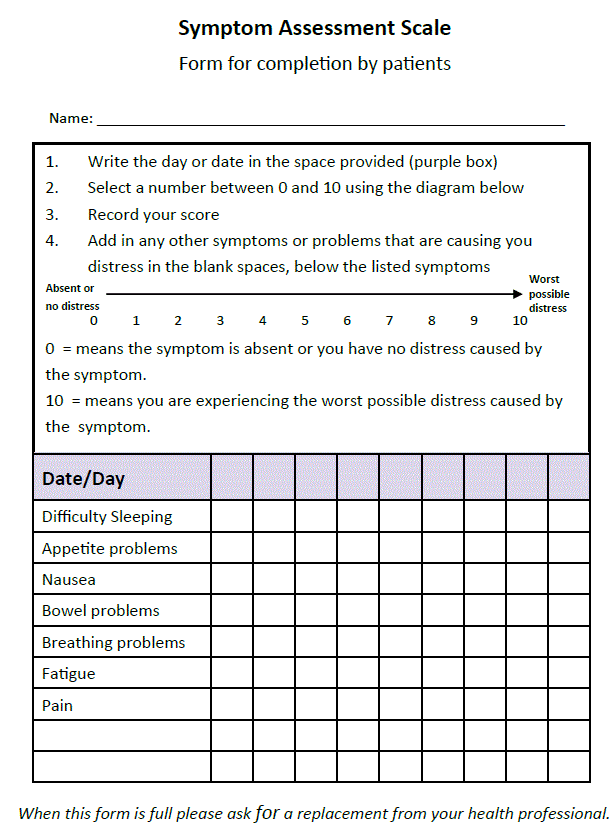SAS - Assesses core physical symptoms

The SAS can be used as:
- As a pen and paper tool for patients to use, so they can monitor and report their own symptoms
- As a clinician checklist and aide memoire when reviewing a patient
- As a verbal screening / monitoring tool - ask the patient to rate how they have felt over the previous 24 hours, prompting them that a score of 0 means no problem with that symptom and a score of 10 means the worst possible problem
- Serial SAS scores are a valuable way to monitor disease and treatment.
Download Symptom Assessment Scale form (172kb docx)
From: Palliative Care Outcomes Collaboration (PCOC)